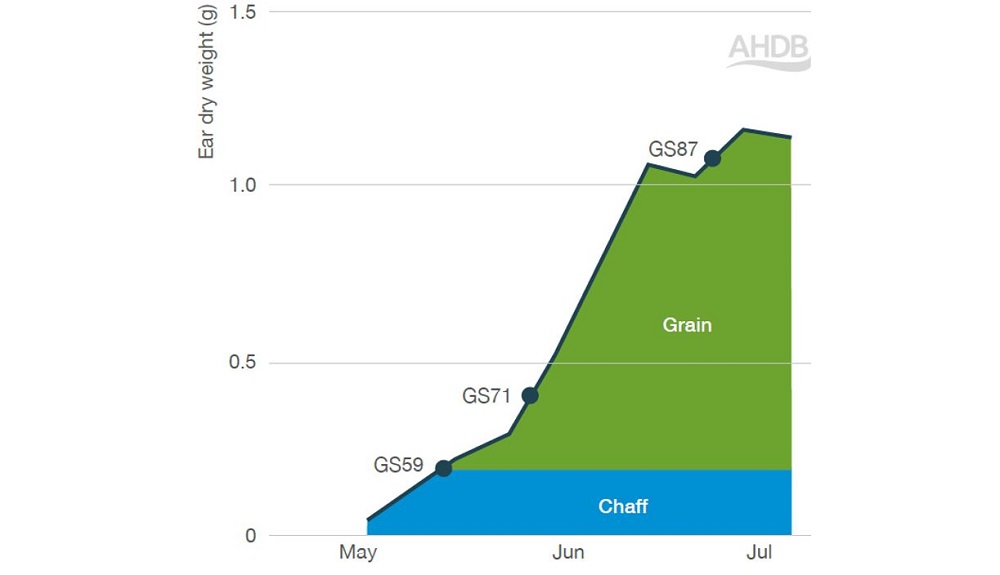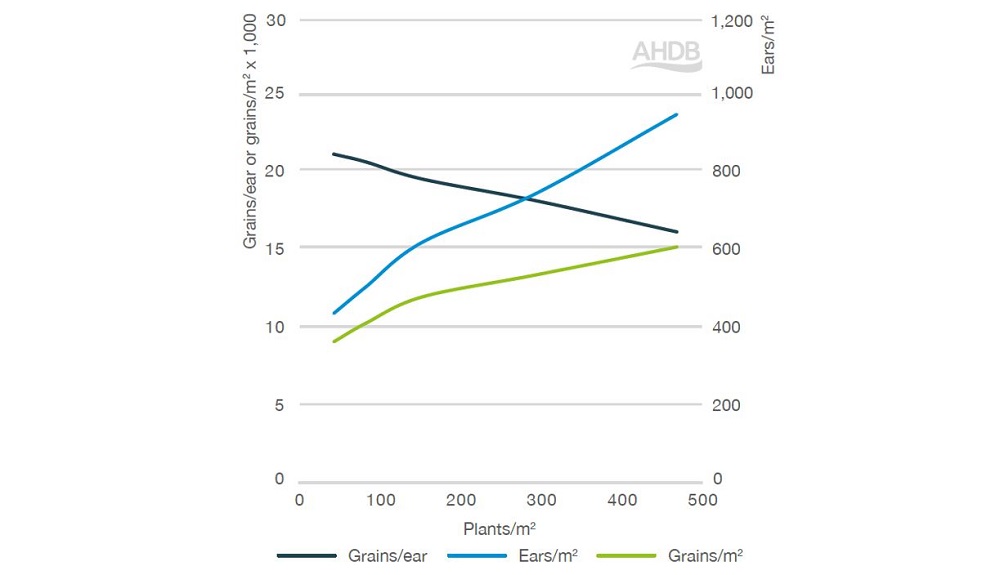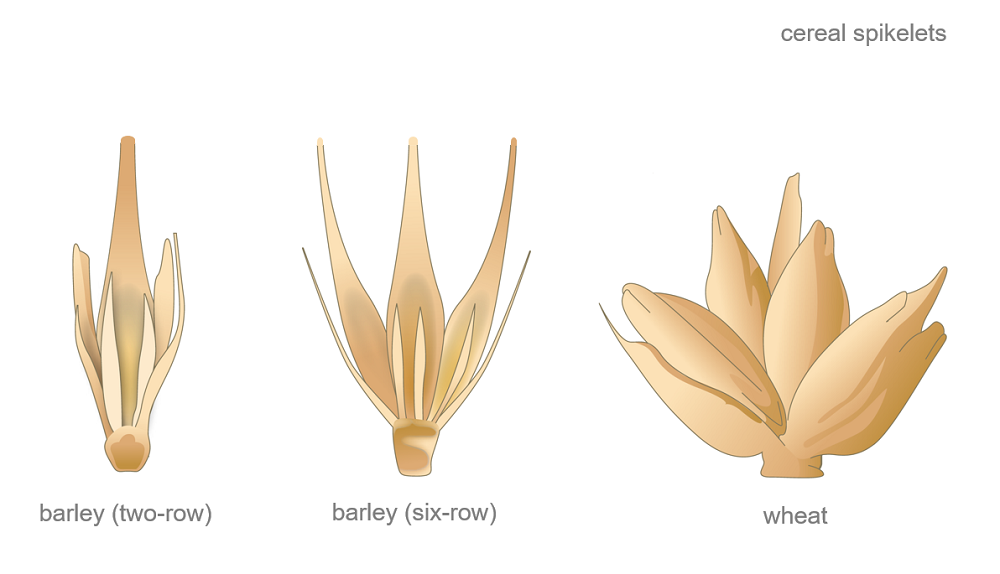- Home
- Knowledge library
- Ear formation, grain development and crop ripening in barley
Ear formation, grain development and crop ripening in barley
Capacity for grain filling is set by grain number per unit area and the storage capacity of each grain. Satisfying the capacity depends on photosynthesis, as well as the redistribution of stem reserves.
Grain filling capacity
Ear development and grain number
Benchmark: Flag leaf to ear emergence = 20 days
Benchmark: Grain number/ear = 24, North = 25, South = 24 (average of main shoots and tillers at harvest)
Varietal influence: High
Other influences: N supply, plant population, sowing date
The number of grains on each ear depends on the number of fertile spikelets on the rachis – the central ‘stem’ of the ear. In two-row barley, spikelets form in threes. However, only the floret in the central spikelet is fertile. In six-row barley (includes all hybrid varieties), florets in all three spikelets are fertile. Wheat is more flexible, with spikelets containing up to nine florets.
As a result, unlike wheat, barley commonly has insufficient grains to store all assimilate formed during grain filling (i.e. it is ‘sink-limited’) – especially in two-row varieties.
In sink-limited crops, grain yields relate more to factors affecting early growth and less to factors affecting late growth. Sink limitation can be reduced by maximising ear/grain number (especially through tiller production and survival).
Ear/grain weight
Benchmark: Ear dry weight at flowering = 0.16 g/ear
Benchmark: Ear dry weight at harvest = 1.11 g/ear
By flowering, the ear comprises florets containing grain, glumes and rachis. Grain dry weight increases slowly at first, then rapidly after GS71. While grain weight increases, the weight of other parts of the ear remains almost unchanged.
How to measure grain number and ear weight
For each measure, take 20 (at least) representative ear samples.
For grain number, take samples just before harvest, thresh them, count the number of grains and calculate the average per ear. Multiply this figure with shoot count data to calculate grains/m2.
For ear weight (e.g. at flowering), dry and weigh the samples, before dividing by the number of ears sampled.
 AHDB
AHDB
Grain filling and ripening
It is important to keep the green canopy healthy for at least five weeks after ear emergence to ensure the grains are fully filled.
Grain ripening takes a further two to three weeks after grain filling is completed. During this period, dry matter content increases and water content decreases.
Final grain dry weight, appearance and specific weight are all determined during grain filling. Poor grain filling usually results in low specific weight.
Benchmark data is for six grains from the central part of the ear.
Benchmark: Dry matter = 39 mg/grain, North = 41 mg, South = 38 mg
Grain filling period lasts for 40 days to 5 July.
Canopies lose most greenness in the two weeks before grain weight reaches its maximum.
Benchmark: GAI = <1
Three days before maximum grain weight
After filling, seed moisture content provides the best index of ripening until grains are dry enough to harvest. Seed moisture content declines (from 70 to 45%) as dry matter accumulates in the grain, then goes down to 20%, due to water loss.
Benchmark: Ripening period = 20 days
 AHDB
AHDB
Glyphosate products may be used pre-harvest on a range of crops to control weeds, aid harvesting and help protect grain quality (particularly in wet harvests) and food safety.
Pre-harvest glyphosate use in cereals and oilseed rape
Information on spring barley
On average, spring barley varieties produce 19–24 grains/ear – fewer than in winter barley.
- Typical grain filling period is 34–41 days
- Typical ear weight at GS87 is 0.8–0.9 g
- Typical GAI at GS87 is 0.1–1.0
 AHDB
AHDB
How to measure grain filling, moisture and ripening
Grain filling period*: The number of days between GS65 and when the gain reaches 45% moisture content.
Grain moisture: Thresh grain from around 20 representative ears, weigh the sample, dry the sample (at 80–100°C) until no further weight loss and weigh again.
Moisture content: 100 - (grain dry weight ÷ sampled grain weight) x 100.
Grain ripening period: The number of days from 45 to 20% moisture content.
*If a grain sample is taken at the end of the grain filling period, the dried and weighed grain can then be counted and divided by the number of grains to determine the dry matter per grain.

 and six-row (right) barley.JPG)
Two-row (left) and six-row barley (right)
Topics:
Sectors:
Tags:

